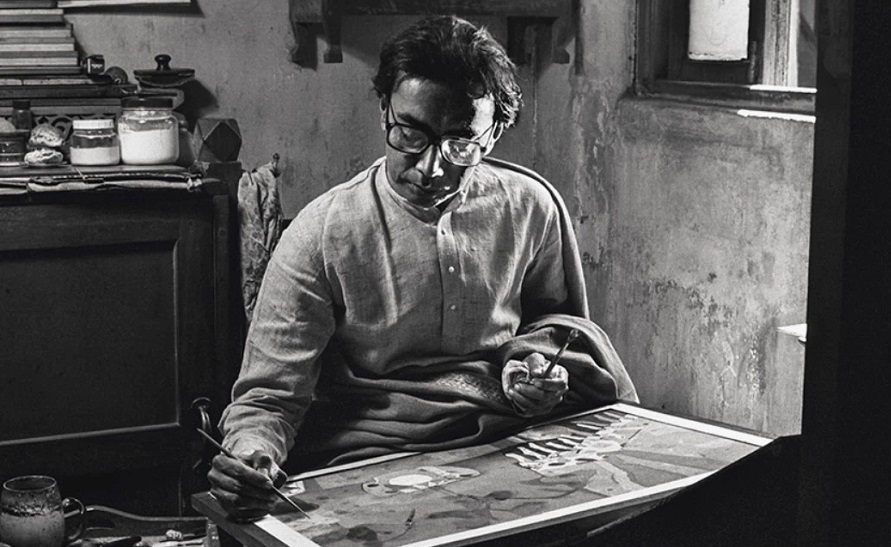I become whole when I paint.
– Ganesh Pyne
Reclusiveness might be a cherished ideal amongst artists and, at times, even a necessity for the creative potential to unleash itself. However, extending it to a point where the artist is reluctant to display the work even to one’s audience is an oddly amusing event. The 20th-century Indian modernist painter Ganesh Pyne abhorred giving interviews, talking about his art, and often exhibiting his work. It was during the 1970s when a Mumbai magazine, The Illustrated Weekly of India, published an article where M.F. Hussain, when asked to rank who the best painter in India was, named the 37-year-old Pyne and considering it was a period when F. N. Souza, Tyeb Mehta, and S. H. Raza were leading painters, this episode immediately brought Pyne into the limelight.
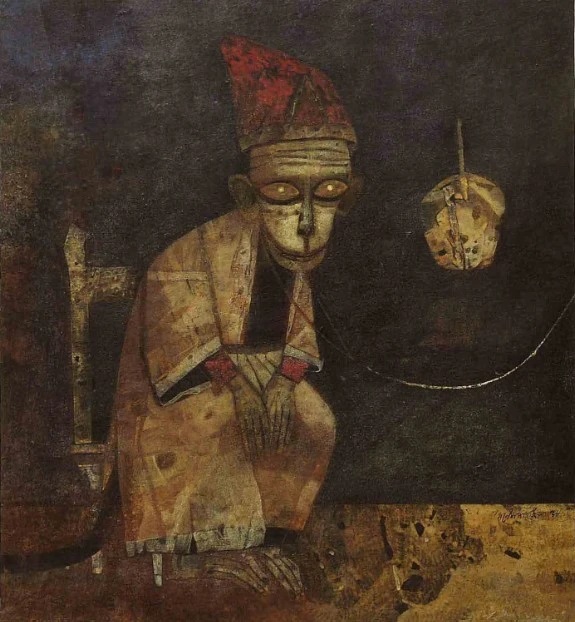
Known for his dark surrealism, Pyne’s childhood played a crucial role in shaping his artistic sensibilities. Born in 1937, Ganesh Pyne grew up in a crumbling family mansion in North Calcutta, listening to his grandmother’s folktales and devouring fantastic stories from children’s books. He encountered death very early in life. While living with his family in a hospital during the Calcutta riots in 1946, he came across a cart of corpses on its to the mortuary. He remembers distinctly that the body on top was that of an older adult, and her necklace shone even as blood flowed out.
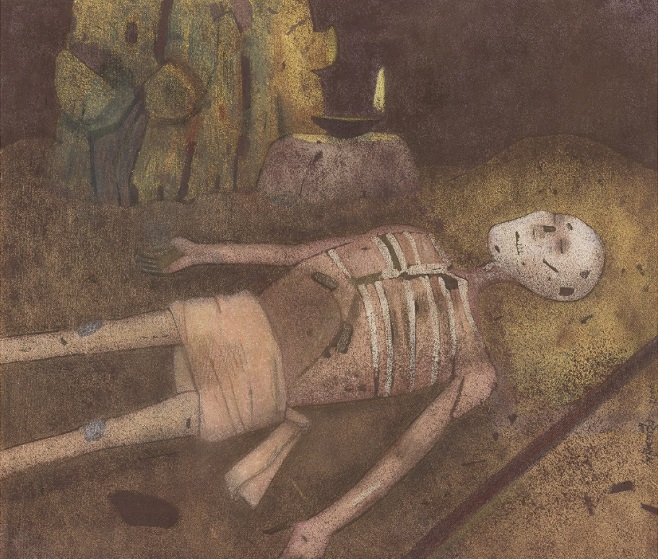
One of the most influential artists of the Bengal School of Art, Pyne commenced his career in the early 1950s as a book illustrator and sketch artist for animation films at Mandar Mullick’s studio in Calcutta. Here, he was taught to distort and exaggerate features to convey different emotions, a stylistic part central to his practice. As one can see in Sleep, the skeletal figure lies supine on the ground, as if dead, with a single lamp beside it. The distorted grainy texture of the painting with the brooding darkness accentuated by his use of the different shades of brown gives the work a spectral quality.
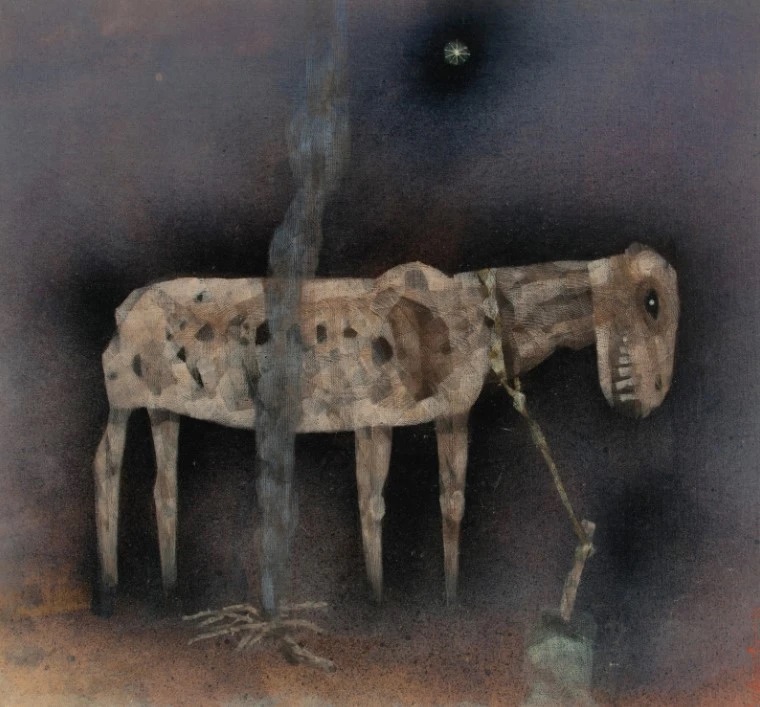
This distinctive style and his use of dark hues surreptitiously draw the viewer into the painting. Take a look at The Animal. The blurry features of the monstrous animal and the rising smoke trigger one to move closer and search intently for clarity; however, nothing but Pyne’s nightmarish world awaits. In painting after painting by Pyne, skulls, skeletons, piercing arrows, and phantasms invoke a vision of a macabre world of emotional chaos. And yet, in an interview in the 1990s, Pyne said, “True darkness gives one a feeling of insecurity bordering on fear, but it also has its charms, mystery, profundity, a fairyland atmosphere.”
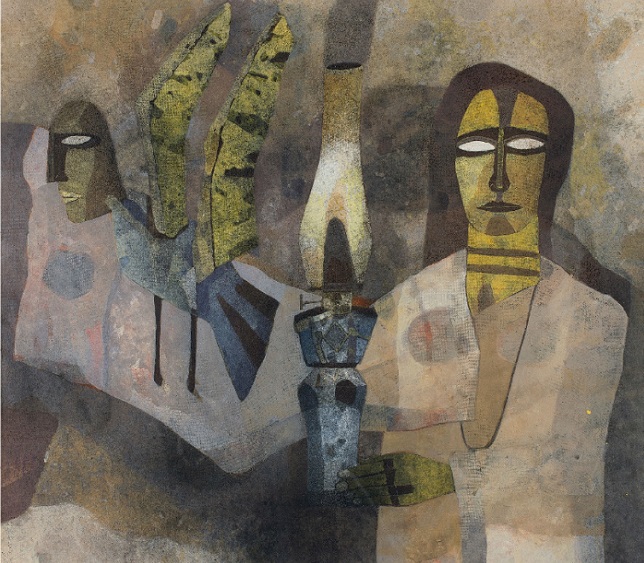
Pyne started as a watercolourist in the Bengal School mode and gradually shifted to gouache. But none of these mediums satisfied him, as Ranjit Hoskote notes, “their range of effects was neither sumptuous enough on the one hand, nor ethereal enough on the other, to convey his particular atmospheres. He wished to work in a medium equally free of opacity and transparency. Tempera gave Pyne both crispness of line and a sense of depth, the necessary illusion of volume, and a sense of idyllic lightness.” A master of the medium, eventually, he would add scumbling and glazing to his use of tempera.
Pyne’s works display meticulous handling of light and dark to create enigmatic images. He achieves this through his unique painting style, which involves applying multiple layers of translucent colour onto the canvas and then burnishing it to create penetrating light and shadow areas. In doing this, he acknowledges the influence of Rembrandt’s treatment of expansive darkness, Paul Klee’s images on dark backgrounds, Abanindranath Tagore’s use of ambient light and Gaganendranath Tagore’s mysterious lights. Untitled (1980) is an excellent example of his mastery of chiaroscuro. In the flickering lamplight, two mysterious figures are revealed against the rock wall: the first, a robed mendicant with a mask-like countenance, who carries the lamp, and the second, his hybrid companion, with the head of a man and the body and wings of a bird.
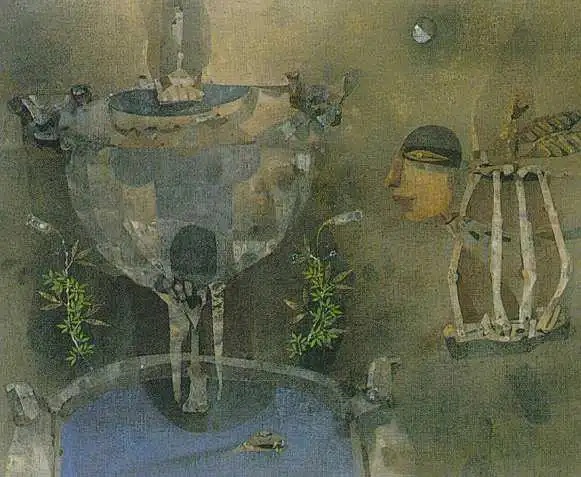
A similar hybrid figure appears in his other painting, Crossing the Fountain. Throughout his career, Pyne has been consistently drawn to animal imagery and the intersections of the human and the animal, an influence which he accords on the one hand to the tradition of ancient Indian sculpture but on the other to the peculiar anatomical features of the animal figure. He says, “I like to paint animals more than humans. In terms of form, they are far stronger and with their four limbs, they occupy a lot of space.” The fountain – which recurs in some of his other paintings – owes its provenance to the scene depicting the Trevi fountain in the Italian filmmaker Fellini’s La Dolce Vita (1960). During his time as an animator, Mullick introduced Pyne to European avant-garde cinema, which had a lasting influence on the latter.
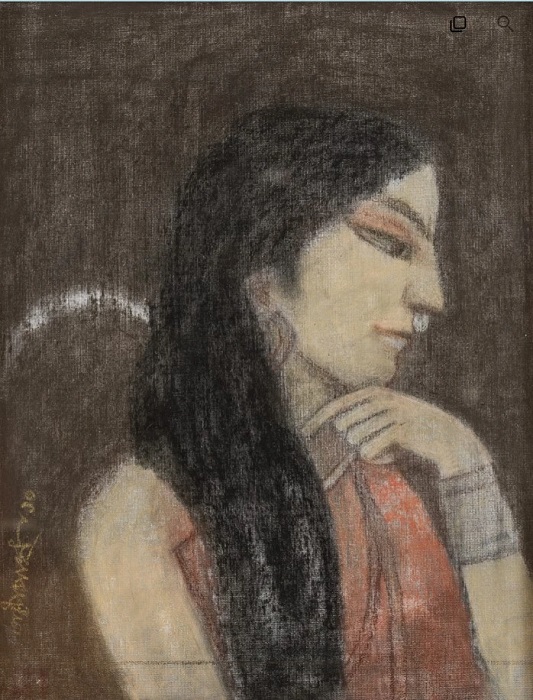
Towards the end of his career and life – he died in 2013 – Pyne made a series of paintings depicting characters from the Mahabharata. While not neglecting the significant figures, Pyne was more interested in the minor characters of the epic, such as Amba, Saubali, Duhsala, Chitrangada, Gandhari and Draupadi, the abjected Ekalavya, the lonely survivor Yuyutsu, the self-exiled advisor Vidura. The text held deep significance for him. He has been quoted to have said, “There is no happiness in the Mahabharata.” When asked about the relationship of the works to contemporary times, Pyne had a remarkable comment to make. He argued that not all works of art need to be in conversation with the present. Pyne’s comment makes us think that the tyranny of the contemporary and the role of art as having a social message for the here and now must be challenged if art has to be genuinely autonomous.
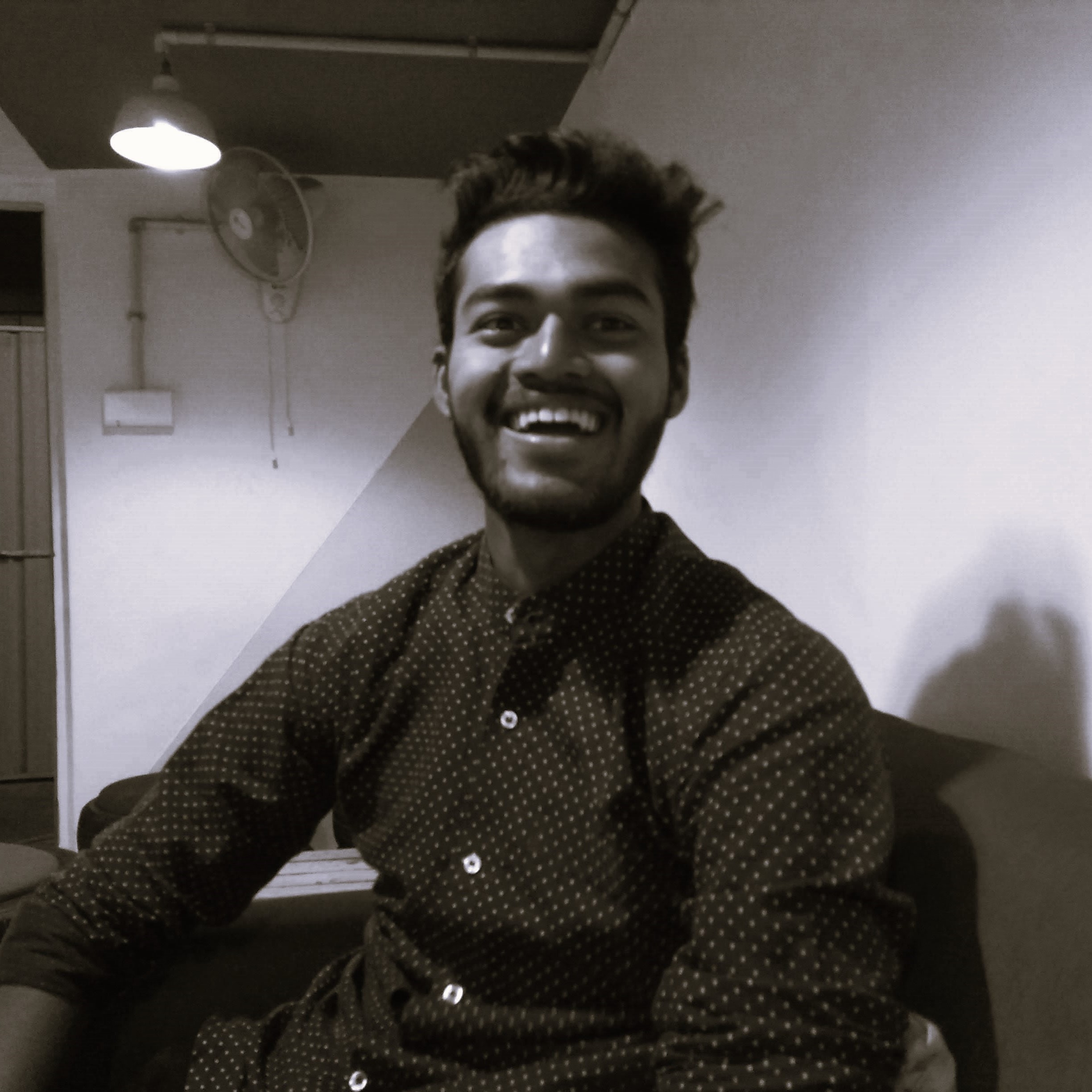
Contributor

